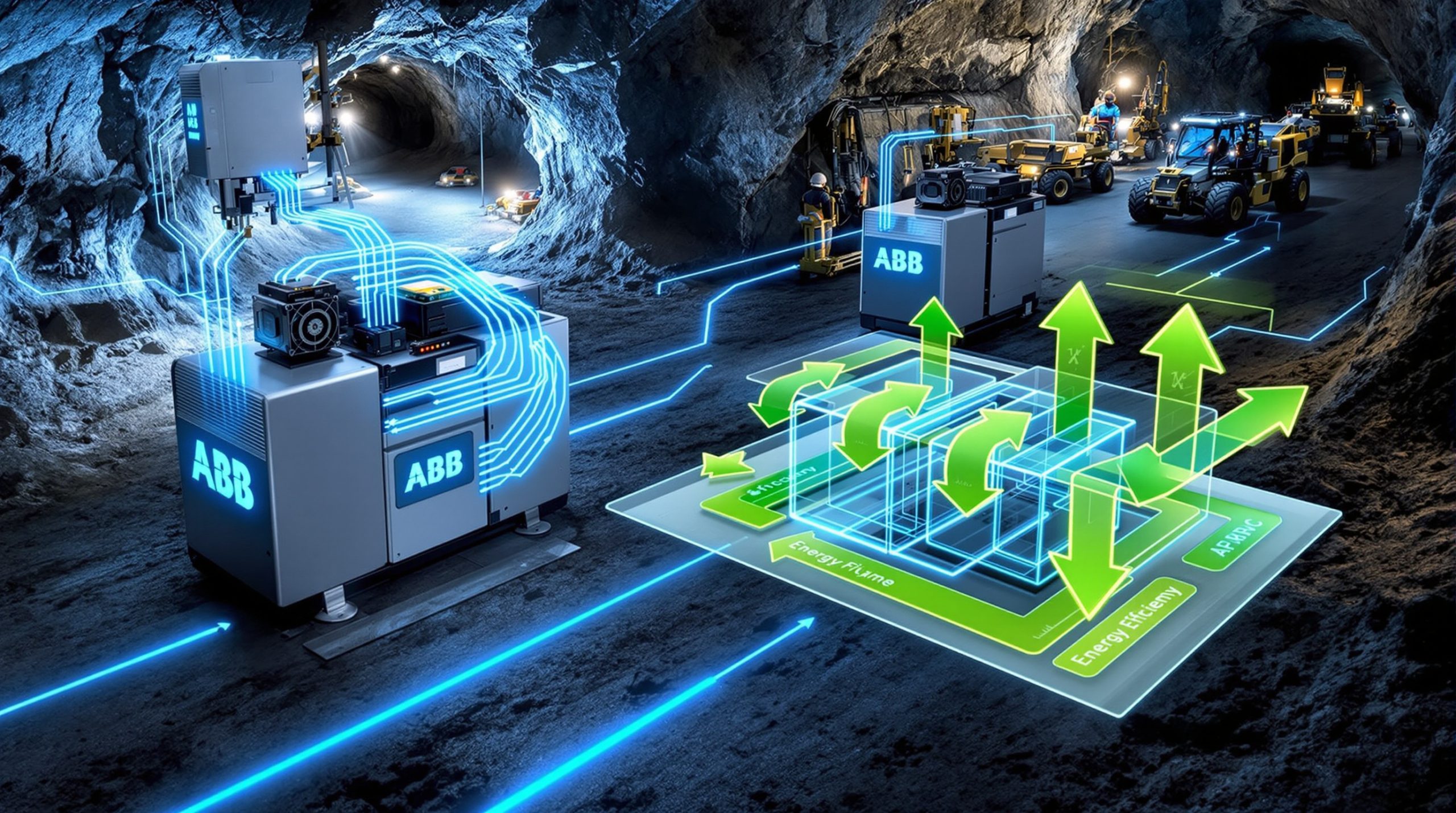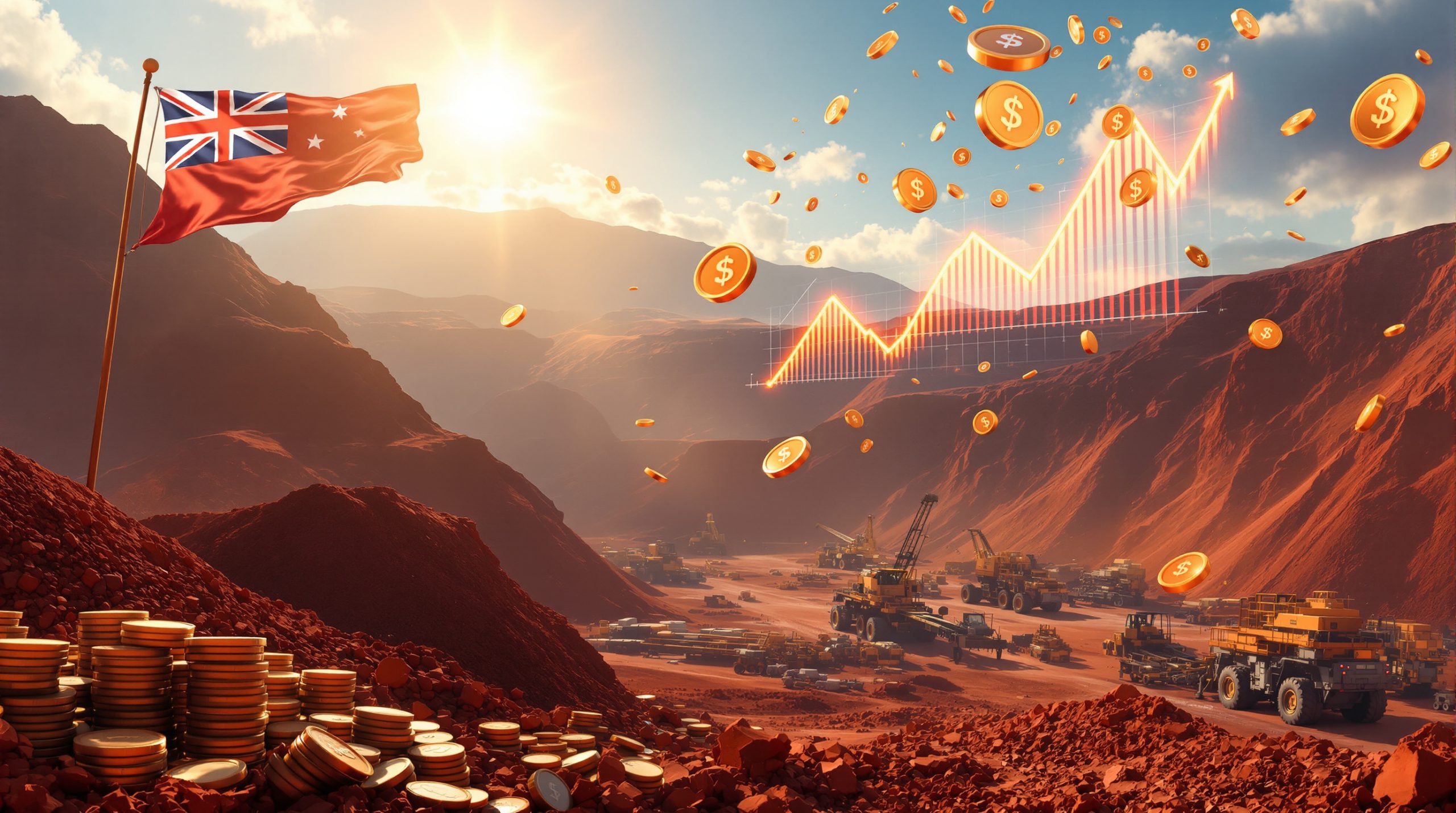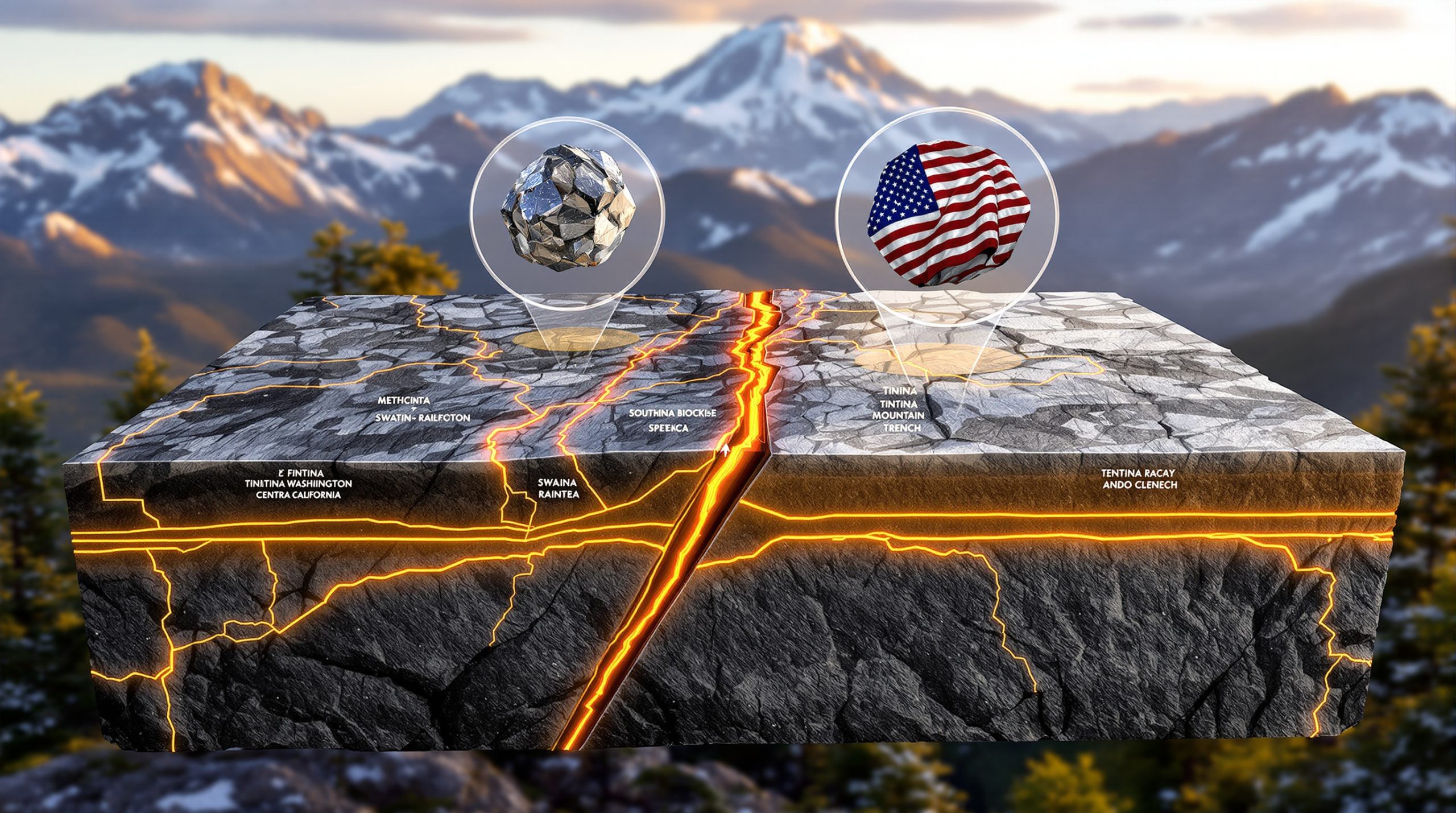Australia's Strategic Position as a Trusted Critical Minerals Supplier
Australia stands at the forefront of global critical minerals supply, leveraging its exceptional geological endowment to meet increasing worldwide critical minerals demand. With officially recognized reserves of 31 critical minerals spanning its vast landscape, Australia has positioned itself as a reliable partner in global supply chains that support clean energy transitions and advanced technologies.
Why Are Critical Minerals Essential for Global Technology and Energy Transitions?
Critical minerals form the foundation of modern technological innovation and clean energy development. These resources—including lithium, rare earth elements, cobalt, nickel, and graphite—are fundamental components in technologies ranging from smartphones and defense systems to electric vehicles and renewable energy infrastructure.
The strategic importance of these minerals has grown exponentially as nations worldwide pursue ambitious decarbonization goals. According to the International Energy Agency, demand for critical minerals is projected to increase by 400-600% by 2040 for clean energy technologies alone.
Federal Resources Minister Madeleine King emphasized that critical minerals are essential "for our green future, but also for our defence applications," highlighting their dual importance in both civilian and military contexts.
These minerals enable the functionality of technologies that define modern life. For example:
- Lithium, cobalt, and nickel are essential for high-performance batteries
- Rare earth elements power efficient motors in electric vehicles and wind turbines
- Graphite serves as a crucial component in battery anodes
- Copper and aluminum underpin electrical transmission systems
- Specialty metals like gallium and indium enable semiconductor technologies
Beyond clean energy applications, these minerals are crucial for national security technologies, aerospace applications, and advanced manufacturing, making their supply chains a matter of strategic importance.
How Does Australia's Geological Advantage Support Its Critical Minerals Position?
Unparalleled Mineral Diversity and Abundance
Australia's geological formations, developed over billions of years, have created one of the world's most mineral-rich landscapes. As Minister King described it, critical minerals are "a gift of Australia's geology," with the country being "in the best place in the world to be able to mine and refine those commodities."
This natural endowment includes:
- The world's largest lithium reserves, concentrated primarily in Western Australia
- Substantial rare earth element deposits, particularly in the Northern Territory and Western Australia
- Significant nickel resources that rank among the world's largest
- Strategic reserves of graphite, manganese, and cobalt
- Important deposits of vanadium, tungsten, and other specialty metals
Geoscience Australia reports that the country possesses economically viable resources for over 25 of the minerals considered critical by major economies, providing a diversified portfolio that few other nations can match.
Regional Distribution of Critical Mineral Resources
One of Australia's key advantages is the geographical distribution of its mineral wealth across multiple states and territories:
| Region | Primary Critical Minerals | Notable Developments |
|---|---|---|
| Western Australia | Lithium, nickel, rare earths | Greenbushes lithium mine, Mt Weld rare earths complex |
| Northern Territory | Rare earths, vanadium | Nolans Project, Arafura Rare Earths development |
| Queensland | Cobalt, vanadium, copper | North West Minerals Province expansion |
| South Australia | Graphite, copper, rare earths | Prominent Hill, Olympic Dam operations |
| Victoria/NSW | Rare earths, antimony | Exploration projects, emerging discoveries |
| Tasmania | Tungsten, tin | Renison operations, specialty mineral focus |
This distribution creates natural redundancy in supply chains and allows for regional specialization in extraction and processing technologies.
What Makes Australia a Trusted Supplier in Global Critical Mineral Markets?
Political Stability and Regulatory Transparency
Australia's reputation as a trusted supplier stems from several fundamental advantages that set it apart from many competing source nations:
- Democratic governance: A stable political system with transparent decision-making processes
- Rule of law: Strong legal frameworks protecting investments and operations
- Regulatory certainty: Clear, consistent mining and environmental regulations
- Sovereign risk mitigation: Minimal risk of nationalization or unexpected policy changes
- Contract enforcement: Reliable legal system for business agreements and dispute resolution
Minister King emphasized this advantage, stating that Australia has "unique geology and the world's best resources sector," highlighting the combination of natural resources and strong governance that makes Australia an attractive partner.
These factors create confidence for international partners seeking secure supply chains—particularly important given that production of many critical minerals is currently concentrated in jurisdictions with higher political or regulatory risk profiles.
Environmental and Social Governance Standards
Australia maintains internationally recognized standards for:
- Environmental management: Stringent requirements for mine development and rehabilitation
- Indigenous engagement: Native title recognition and consultation protocols
- Worker safety: World-class occupational health and safety regulations
- Community relations: Social license to operate as a core industry principle
- Transparency initiatives: Participation in international reporting standards like EITI
These standards align with increasing demands from end-users for responsibly sourced materials, particularly for technologies marketed as environmentally beneficial. This creates a competitive advantage as major manufacturers implement supply chain due diligence practices and consumers become more conscious of sourcing ethics.
How Is Australia Developing Its Critical Minerals Value Chain?
From Extraction to Advanced Processing
Australia is actively expanding beyond its traditional role as a raw material exporter to capture more value across the supply chain:
- Mineral processing facilities: Development of refineries and processing plants
- Precursor production: Moving toward battery material manufacturing
- Technology integration: Connecting mining with advanced manufacturing
- Research partnerships: Collaboration between industry and research institutions
- Circular economy initiatives: Recycling and recovery programs for critical minerals
This vertical integration strategy aims to transform Australia from primarily an exporter of raw materials to a producer of higher-value products for global technology markets.
According to Minister King, Australia is actively facilitating the growth of processing capabilities spanning "the minerals we can extract, the processing we're facilitating right now, the refining we see in our future" through coordinated government and private investment strategies.
Case Study: Lithium Value Chain Development
Australia's lithium sector exemplifies the evolution toward value-added processing:
- Mining expansion: Growth in hard-rock lithium extraction from spodumene deposits
- Hydroxide production: Development of lithium hydroxide facilities in Western Australia
- Battery precursor materials: Early-stage development of cathode active material production
- Research collaboration: Partnerships with battery manufacturers and technology companies
- Export diversification: Moving from concentrate to higher-value products
This progression demonstrates Australia's commitment to capturing more economic value from its critical mineral resources while creating supply chain resilience for key partners.
What Strategic Partnerships Support Australia's Critical Minerals Sector?
International Alliances and Trade Relationships
Australia has established strategic partnerships to strengthen its position in global critical mineral markets:
- United States cooperation: High-level government engagement and trade agreements
- Japan and Korea agreements: Technology transfer and market access arrangements
- European Union dialogues: Partnerships focused on sustainable supply chains
- Quad alliance cooperation: Critical minerals as a focus area for Australia, US, Japan, and India
- AUKUS technology sharing: Defense applications for critical minerals
These relationships provide market certainty and facilitate investment in Australian projects while supporting global supply chain resilience.
Minister King confirmed the Federal Government is "already working with other countries on critical minerals deals, including Japan and Korea," demonstrating the multifaceted approach to international engagement.
High-level diplomatic engagement reinforces these partnerships, exemplified by Prime Minister Albanese's discussions with President Trump that included "areas for growth, including critical minerals," according to official statements.
Government-Industry Collaboration
Domestic coordination enhances Australia's critical minerals capabilities:
- Critical Minerals Office: Whole-of-government approach to sector development
- Industry growth centers: Facilitating innovation and commercialization
- Research funding: Support for processing technology development
- Skills initiatives: Building workforce capabilities for future industry needs
- Infrastructure coordination: Ensuring enabling infrastructure supports industry growth
This collaboration extends to high-level industry engagement, demonstrated by the August 2025 White House visit by BHP CEO Mike Henry, Rio Tinto CEO Simon Trott, and former Rio Tinto CEO Jakob Stausholm, which focused on strengthening critical minerals supply chains.
What Economic Impact Does the Critical Minerals Sector Have on Australia?
Export Growth and Revenue Potential
The critical minerals sector represents a significant economic opportunity for Australia:
- Export diversification: Reducing reliance on traditional commodity exports like iron ore and coal
- Value-added potential: Higher returns from processed materials versus raw ores
- Growth trajectory: Representing one of the fastest-growing segments of Australia's mineral exports
- Price premiums: Potential for premium pricing based on ESG credentials and security of supply
- Market expansion: Growing demand from clean energy and technology sectors worldwide
The Australian Government's Critical Minerals Strategy projects that critical minerals exports could reach approximately AUD 21 billion by 2030, representing a major growth opportunity despite short-term market volatility.
This economic potential is further enhanced by Australia's efforts to secure exemptions from trade barriers, including discussions regarding the tariff landscape insights implemented by some trading partners.
Regional Development and Employment
The critical minerals sector delivers substantial benefits to regional communities:
- Direct employment: Creation of high-skilled mining and processing jobs
- Supply chain opportunities: Growth in supporting industries and services
- Infrastructure development: Improvements to regional transport and energy systems
- Community investment: Social infrastructure supported by mining operations
- Skills development: Training and education opportunities in regional areas
These benefits are particularly important for diversifying regional economies beyond traditional industries, creating resilience in communities historically dependent on a narrow economic base.
What Challenges Must Australia Address to Maximize Its Critical Minerals Potential?
Market Development and Demand Certainty
Several challenges require strategic responses:
- Market volatility: Critical minerals markets can experience significant price fluctuations
- Investment attraction: Securing capital for processing and refining facilities requires certainty
- Technology adoption: Implementing advanced extraction and processing methods
- Skills gaps: Developing specialized workforce capabilities for new operations
- Infrastructure requirements: Ensuring energy, water, and transport systems support industry growth
Successfully addressing these challenges requires coordinated action between industry, government, and research institutions to create an environment conducive to long-term investment despite short-term market uncertainties.
Competitive Landscape and International Positioning
Australia faces competition from other resource-rich nations:
- Cost competitiveness: Managing production costs relative to other suppliers
- Processing scale: Building sufficient scale in downstream processing
- Technology leadership: Maintaining technological advantages in extraction and processing
- Supply chain integration: Connecting effectively with global manufacturing networks
- Strategic positioning: Differentiating Australian supply on quality, reliability, and sustainability
Australia's strategy to overcome these challenges focuses on leveraging its governance advantages, environmental credentials, and technical expertise rather than competing solely on production costs.
How Is Government Policy Supporting Critical Minerals Development?
Strategic Framework and Investment Support
The Australian government has implemented a comprehensive policy approach:
- Critical Minerals Strategy: National framework for sector development and prioritization
- Financial support mechanisms: Loans, grants, and investment facilitation programs
- Regulatory streamlining: Expedited approvals for priority projects
- Research funding: Support for processing technology development
- International engagement: Trade facilitation and diplomatic support for market access
Minister King highlighted the government's role in encouraging "both government and private investment" in processing and refining capabilities, demonstrating a partnership approach to sector development.
These measures aim to accelerate project development and strengthen Australia's competitive position in global markets by addressing key barriers to growth and investment.
Case Study: Government Initiatives in Action
Recent policy implementations demonstrate practical support:
- Critical Minerals Facility: Financing support for strategic projects
- Streamlined approvals: Expedited processes for priority developments
- Research partnerships: Funding for processing technology innovation
- International agreements: Government-to-government supply arrangements
- Industry roadmaps: Sector-specific development plans
These initiatives are designed to create a supportive ecosystem for critical minerals development while ensuring that projects meet Australia's high standards for environmental and social performance.
What Future Trends Will Shape Australia's Critical Minerals Sector?
Technological Evolution and Market Dynamics
Several emerging trends will influence sector development:
- Processing innovation: Advanced technologies for more efficient extraction and refining
- Circular economy growth: Increased recycling and recovery of critical minerals
- Supply chain regionalization: Reshoring of manufacturing using Australian minerals
- ESG premium markets: Price advantages for responsibly sourced materials
- Defense applications: Growing importance of secure supply for defense technologies
These trends create both challenges and opportunities for Australia's critical minerals sector, requiring adaptability and strategic foresight to maintain competitiveness.
Long-term Outlook and Strategic Positioning
Australia's future in critical minerals will be shaped by:
- Demand growth: Continued expansion of clean energy and technology applications
- Value chain integration: Deeper connections to manufacturing and technology sectors
- Sustainability leadership: Setting standards for responsible production
- Innovation ecosystem: Development of intellectual property in processing and applications
- Strategic alliances: Strengthening partnerships with key technology-producing nations
By focusing on these elements, Australia can maintain and enhance its position as a trusted supplier while capturing greater economic value from its natural resources.
How Can Australia Maintain Its Position as a Trusted Supplier?
Sustainability and Responsible Production
Maintaining trust requires ongoing commitment to:
- Environmental performance: Minimizing impacts of mining and processing operations
- Indigenous partnerships: Meaningful engagement and benefit-sharing arrangements
- Transparency initiatives: Clear reporting on production practices and impacts
- Certification schemes: Participation in responsible sourcing programs
- Life-cycle management: Addressing full product life cycles including recycling and recovery
These commitments align with global trends toward greater supply chain accountability and provide a foundation for Australia's market positioning as a responsible supplier. The ongoing sustainable mining transformation further strengthens Australia's credentials in this area.
Supply Chain Resilience and Security
Enhancing reliability through:
- Diversified production: Multiple sources within Australia for key minerals
- Infrastructure redundancy: Ensuring robust logistics and energy systems
- Processing capabilities: Domestic value addition to reduce supply chain vulnerability
- Technology adoption: Digital systems for supply chain tracking and management
- Strategic stockpiling: Consideration of strategic minerals reserve for critical materials
These measures enhance Australia's appeal to partners seeking security of supply in an increasingly uncertain global environment.
FAQ: Australia's Critical Minerals Sector
What defines a "critical mineral" in the Australian context?
Critical minerals are metals and non-metals essential for economic and national security that face supply chain risks. Australia's list currently includes 31 minerals prioritized based on their economic importance and supply vulnerability, including lithium, rare earth elements, cobalt, and graphite. This classification aligns with international definitions while reflecting Australia's specific resource endowment and strategic interests.
How does Australia compare to other critical mineral suppliers globally?
Australia stands out for its combination of resource abundance, political stability, transparent regulations, and high ESG standards. While other countries may have larger reserves of specific minerals (such as China with rare earths), Australia offers a more secure and responsible supply option across a diverse mineral portfolio. This comprehensive advantage positions Australia as a preferred partner for nations and companies seeking to reduce supply chain vulnerabilities.
What role do critical minerals play in Australia's net-zero transition?
Critical minerals are essential inputs for renewable energy technologies, energy storage, and electrification. Australia's domestic clean energy transition requires these materials, creating synergies between resource development and decarbonization goals. This alignment creates policy coherence and economic opportunities as Australia pursues both critical minerals development and emissions reduction targets.
How is Australia addressing the environmental impacts of critical mineral mining?
Australia applies stringent environmental regulations to mining operations, including requirements for impact assessment, management plans, rehabilitation, and community consultation. The sector is also developing more efficient extraction technologies and exploring renewable energy use in mining operations. These efforts aim to minimize the environmental footprint of critical minerals production while maintaining economic viability.
What investment opportunities exist in Australia's critical minerals sector?
Investment opportunities span the value chain from exploration and mining to processing, refining, and manufacturing of components. Government support programs, established infrastructure, and clear regulatory pathways enhance the investment environment. Foreign and domestic investors can participate in various aspects of the sector, with particular opportunities in processing and value-addition activities that align with Australia's strategic priorities.
Further Exploration
Readers interested in learning more about Australia's role as a trusted supplier of critical minerals can explore additional resources from sources such as:
- The Australian Government's Critical Minerals Office
- Geoscience Australia's minerals information
- Resources and industry reports from the Department of Industry, Science and Resources
- Industry association publications on mining industry evolution
- International Energy Agency reports on critical minerals for clean energy transitions
Ready to Invest in the Next Major Mineral Discovery?
Take your investment strategy to the next level with Discovery Alert's proprietary Discovery IQ model, which delivers real-time notifications when significant ASX mineral discoveries occur, transforming complex data into actionable insights. Understand why major mineral discoveries can lead to substantial market returns by exploring the dedicated discoveries page and position yourself ahead of the market today.




